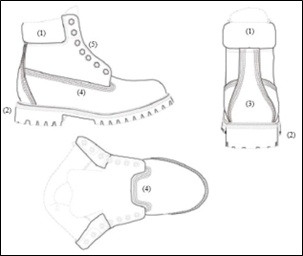The US Court of Appeals for the Second Circuit vacated and remanded a district court’s dismissal of a complaint for trade dress infringement and unfair competition, finding that the district court erred in requiring the plaintiffs to articulate distinctiveness of trade dress infringement at the pleading stage. Cardinal Motors, Inc. v. H&H Sports Protection USA Inc., Case No. 23-7586 (2d Cir. Feb. 6, 2025) (Chin, Sullivan, Kelly, JJ.)
Cardinal is a designer and licensor of motorcycle helmets. At issue was the “Bullitt” helmet, which Cardinal exclusively licenses to Bell Sports and is “one of the most popular helmets made by Bell.” H&H manufactures and sells the “Torc T-1” helmet. Both the Bullitt and Torc T-1 helmets have “flat and bubble versions,” feature “metallic borders around the bottom and front opening of the helmet,” and “share similar technical specifications.”
Cardinal sued H&H in September 2020, alleging unfair competition and trade dress infringement. Cardinal amended its complaint twice but both amended complaints were dismissed for failure “to adequately plead the claimed trade dress with precision or with allegations of its distinctiveness.” In Cardinal’s third amended complaint, it included two alternative trade dresses – a “General Trade Dress” and “Detailed Trade Dress” – which listed features of the Bullitt at different levels of detail.
Despite the amendment, the district court dismissed the third amended complaint with prejudice. Based on the general trade dress, the district court reasoned that Cardinal failed to allege distinctiveness and therefore failed to allege a plausible trade dress claim. The district court extended its reasoning to “summarily conclud[e]” that the detailed trade dress also failed to articulate distinctiveness. Cardinal appealed.
Prior to making any determinations, the Second Circuit clarified that distinctiveness and the articulation requirement are separate inquiries, and that the articulation requirement is evaluated first. A plaintiff meets the articulation “requirement by describing with precision the components – i.e., specific attributes, details, and features – that make up its claimed trade dress.” The Court explained that the articulation requirement assists courts and juries to evaluate infringement claims, ensures the design is not too general to protect, and allows a court to identify what combination of elements would be infringing.
Focusing on distinctiveness, the Second Circuit explained that a trade dress plaintiff must specifically allege that its product design has acquired distinctiveness. Acquired distinctiveness is when the mark has a secondary meaning, where the public primarily associates the mark with the “source of the product rather than the product itself.” Separate from the elements of trademark, the plaintiff must meet the articulation requirement, which entails listing the components that make up the trade dress.
Having clarified the pleading requirements, the Second Circuit found de novo that the district court erred in mixing the articulation requirement with the distinctiveness requirement at the pleading stage. The Second Circuit determined that the district court erred in dismissing Cardinal’s complaint for failure to meet the articulation requirement. The Court found that Cardinal met the articulation requirement because the general trade dress was “sufficiently [...]
Continue Reading
read more

 Subscribe
Subscribe





